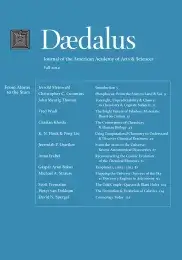Phosphorus: From the Stars to Land & Sea
The chemistry of the element phosphorus offers a window into the diverse field of inorganic chemistry. Fundamental investigations into some simple molecules containing phosphorus reveal much about the ramifications of this element’s position in the periodic table and that of its neighbors. Additionally, there are many phosphorus compounds of commercial importance, and the industry surrounding this element resides at a crucial nexus of natural resource stewardship, technology, and modern agriculture. Questions about our sources of phosphorus and the applications for which we deploy it raise the provocative issue of the human role in the ongoing depletion of phosphorus deposits, as well as the transfer of phosphorus from the land into the seas.
Inorganic chemistry can be defined as “the chemistry of all the elements of the periodic table,”1 but as such, the field is impossibly broad, encompassing everything from organic chemistry to materials science and enzymology. One way to gain insight into and appreciate the rapidly moving and diverse field of inorganic chemistry is to view the science from the perspective of the elements themselves, since they are the basic ingredients for assembling molecules or materials–and indeed, all matter, living or inanimate. Although phosphorus may be less celebrated than carbon or hydrogen, it joins those elements (along with nitrogen, oxygen, and sulfur) to constitute the six “biogenic elements” (those needed in large quantities to make living organisms; see Figure 1).2 Let us take a look at some of the issues that arise in inorganic chemistry from the perspective of phosphorus, illustrating in the process the notion that each element has its own story to tell.
Many phosphorus-containing chemical compounds are commercially valuable and have interesting or important applications.3 Lithium hexafluorophosphate, for example, is the electrolyte in common . . .
